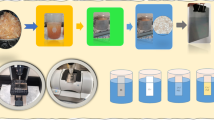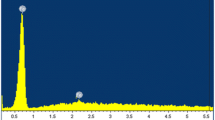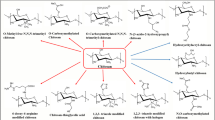Abstract
Chitosan stands out as the only known polysaccharide of its kind, second only to cellulose. As the second-largest biopolymer globally, chitosan and its derivatives are extensively used in diverse areas such as metal anti-corrosion prevention, food production, and medical fields. Its benefits include environmental friendliness, non-toxicity, cost-effectiveness, and biodegradability. Notably, the use of chitosan and its derivatives has gained substantial attention and has been extensively researched in the fields of metal anti-corrosion prevention and antibacterial applications. By means of chemical modification or synergistic action, the inherent limitations of chitosan can be substantially improved, thereby enhancing its biological and physicochemical properties to meet a wider range of applications and more demanding application requirements. This article offers a comprehensive review of chitosan and its modified composite materials, focusing on the enhancement of their anticorrosion and antibacterial properties, as well as the mechanisms by which they serve as anticorrosion and antibacterial agents. Additionally, it summarizes the synthesis routes of various modification methods of chitosan and their applications in different fields, aiming to contribute to the interdisciplinary development and potential applications of chitosan in various areas.
Graphical Abstract



















Similar content being viewed by others
References
Alves Z, Abreu B, Ferreira NM et al (2021) Enhancing the dispersibility of multiwalled carbon nanotubes within starch-based films by the use of ionic surfactants. Carbohyd Polym 273:118531
(2020) Chitosan Schiff base: an environmentally benign biological macromolecule as a new corrosion inhibitor for oil & gas industries. Int J Biol Macromol 144:305–315
Ardean C, Davidescu CM, Nemes NS et al (2021) Factors influencing the antibacterial activity of chitosan and chitosan modified by functionalization. Int J Mol Sci 22:7449
Arwati IGA, Majlan EH, Alva S, Muhammad W (2022) Effect of chitosan on the corrosion inhibition for aluminium alloy in H2SO4 medium. Energies 15:8511
Ashassi-Sorkhabi H, Kazempour A (2020) Chitosan, its derivatives and composites with superior potentials for the corrosion protection of steel alloys: a comprehensive review. Carbohyd Polym 237:116110
Badr E, Hefni HHH, Shafek SH, Shaban SM (2020) Synthesis of anionic chitosan surfactant and application in silver nanoparticles preparation and corrosion inhibition of steel. Int J Biol Macromol 157:187–201
Chandrasekaran M, Kim KD, Chun SC (2020) Antibacterial activity of chitosan nanoparticles: a review. Processes 8:1173
Chaubey N, Savita QA et al (2021) Frontiers and advances in green and sustainable inhibitors for corrosion applications: a critical review. J Mol Liq 321:114385
Chen NL, Kong PP, Feng HX et al (2019) Corrosion mitigation of chitosan Schiff base for Q235 Steel in 1.0 mol/L HCl. J Bio Tribo-Corros 5:219
Chen WC, Chien HW et al (2022) Enhancing the antibacterial property of chitosan through synergistic alkylation and chlorination. Int J Biol Macromol 217:321–329
Chen Z, Yao X, Liu L et al (2017) Blood coagulation evaluation of N-alkylated chitosan. Carbohyd Polym 173:259–268
Cheng CH, Tu YY, Lin CJ (2022) Studies of mercaptosuccinic acid-crosslinked chitosan hydrogel with grafted cinnamaldehyde and silver nanoparticles for antibacterial biomedical application. Int J Mol Sci 23:14806
Cui G, Guo J, Zhang Y et al (2019) Chitosan oligosaccharide derivatives as green corrosion inhibitors for P110 steel in a carbon-dioxide-saturated chloride solution. Carbohyd Polym 203:386–395
Darmokoesoemo H, Suyanto S, Anggara LS et al (2018) Application of carboxymethyl chitosan-benzaldehyde as anticorrosion agent on steel. Int J Chem Eng 2018:4397867
El-Askalany AH, Mostafa SI, Shalabi K et al (2016) Novel tetrazole-based symmetrical diselenides as corrosion inhibitors for N80 carbon steel in 1 M HCl solutions: experimental and theoretical studies. J Mol Liq 223:497–508
Feng L, Zhang S, Feng Y et al (2020) Self-aggregate nanoscale copolymer of new synthesized compounds efficiently protecting copper corrosion in sulfuric acid solution. Chem Eng J 394:124909
Haque J, Srivastava V, Quraishi MA et al (2020) Polar group substituted imidazolium zwitterions as eco-friendly corrosion inhibitors for mild steel in acid solution. Corros Sci 172:108665
Ibrahimi BE, Bazzi AJL, El Issami S (2020) Amino acids and their derivatives as corrosion inhibitors for metals and alloys. Arab J Chem 13:740–771
Iyer M, Anand U, Thiruvenkataswamy S et al (2023) A review of chromium (Cr) epigenetic toxicity and health hazards. Sci Total Environ 882:163483
Jung J, Bae Y, Cho YK et al (2020) Structural insights into conformation of amphiphilic quaternary ammonium chitosans to control fungicidal and anti-biofilm functions. Carbohyd Polym 228:115391
Lai X, Hu J, Ruan T et al (2021) Chitosan derivative corrosion inhibitor for aluminum alloy in sodium chloride solution: a green organic/inorganic hybrid. Carbohyd Polym 265:118074
Lal S, Arora S, Sharma C (2016) Synthesis, thermal and antimicrobial studies of some Schiff bases of chitosan. J Therm Anal Calorim 124:909–916
Lee JS, Nah H, Moon HJ et al (2020) Controllable delivery system: a temperature and pH-responsive injectable hydrogel from succinylated chitosan. Appl Surf Sci 528:146812
Li P, He L, Li X et al (2021) Corrosion inhibition effect of N-(4-diethylaminobenzyl) quaternary ammonium chitosan for X80 pipeline steel in hydrochloric acid solution. Int J Electrochem Sci 16:150931
Li YT, Wu M, Liu JG et al (2018) Corrosion inhibition performance of chitosan on carbon steel in seawater medium. Mater Prot 41:21–24
Liu ST, Liao KX, He GX et al (2020) Research and application of chitosan and its derivatives in metal corrosion inhibition: review. Surf Tech 49:132–141
Lu H, Guo Y (2014) Synergistic inhibition effect of hydroxypropyl chitosan and surfactant for carbon steel. Surf Tech 43:69–74
Macedo RGMA, Marques NN, Paulucci LCS et al (2019) Water-soluble carboxymethylchitosan as green scale inhibitor in oil wells. Carbohyd Polym 215:137–142
Mansour AA, Hejjaj C, Thari FZ et al (2023) Interfacial phenomena and surface protection of N80-carbon steel in acidic environments using thiazolidinediones: an experimental and computational analysis. Colloid Surface A 677:132415
Menaka R, Subhashini S (2017) Chitosan Schiff base as effective corrosion inhibitor for mild steel in acid medium. Polym Int 66:349–358
Obot IB, Umoren SA, Ankah NK (2019) Pyrazine derivatives as green oil field corrosion inhibitors for steel. J Mol Liq 277:749–761
Olasunkanmi LO, Obot IB, Kabanda MM, Ebenso EE (2015) Some quinoxalin-6-yl derivatives as corrosion inhibitors for mild steel in hydrochloric acid: experimental and theoretical studies. J Phys Chem C 119:16004–16019
Piegat A, Zywicka A, Niemczyk A, Goszczynska A (2021) Antibacterial activity of N, O-acylated chitosan derivative. Polymer 13:107
Pozzo LY, Conceição TF, Spinelli A et al (2018) Chitosan coatings crosslinked with genipin for corrosion protection of AZ31 magnesium alloy sheets. Carbohyd Polym 181:71–77
Rbaa M, Benhiba F, Hssisou R et al (2021) Green synthesis of novel carbohydrate polymer chitosan oligosaccharide grafted on d-glucose derivative as bio-based corrosion inhibitor. J Mol Liq 322:114549
Salleh SZ, Yusoff AH, Zakaria SK et al (2021) Plant extracts as green corrosion inhibitor for ferrous metal alloys: a review. J Clean Prod 304:127030
Santosa LRL, Marinob CEB, Riegel-Vidotti IC (2019) Silica/chitosan hybrid particles for smart release of the corrosion inhibitor benzotriazole. Eur Polym J 115:86–98
Shahini MH, Ramezanzadeh B, Mohammadloo HE (2021) Recent advances in biopolymers/carbohydrate polymers as effective corrosion inhibitive macromolecules: a review study from experimental and theoretical views. J Mol Liq 325:115110
Si ZY, Hou Z, Vikhe YS et al (2021) Antimicrobial effect of a novel chitosan derivative and its synergistic effect with antibiotics. ACS Appl Mater Interfaces 13:3237–3245
Singh A, Ansari KR, Kumar A et al (2017) Electrochemical, surface and quantum chemical studies of novel imidazole derivatives as corrosion inhibitors for J55 steel in sweet corrosive environment. J Alloy Compd 712:121–133
Song WC, Zhao X, Jin ZQ et al (2023) Poly(vinyl alcohol) for multi-functionalized corrosion protection of metals: a review. J Clean Prod 394:13639, 0
Srivastava V, Chauhan DS, Joshi PG et al (2018) PEG-Functionalized chitosan: a biological macromolecule as a novel corrosion inhibitor. ChemistrySelect 3:1990–1998
Sun WX, Liu YP, Li TH et al (2019) Anti-corrosion of amphoteric metal enhanced by MAO/corrosion inhibitor composite in acid, alkaline and salt solutions. J Colloid Interf Sci 554:488–499
Tang XD, Liu JY (2017) Corrosion inhibition performance of chitosan and CTAB blend system for Q235 steel in acidic medium. China Surfact Det Cosmet 47:616–620
Tseng CH, Lei C, Chen YC (2018) Evaluating the health costs of oral hexavalent chromium exposure from water pollution: a case study in Taiwan. J Clean Prod 172:819–826
Umoren SA, Solomon MM, Obot IB, Suleiman RK (2019) A critical review on the recent studies on plant biomaterials as corrosion inhibitors for industrial metals. J Ind Eng Chem 76:91–115
Wan K, Feng P, Hou B, Li Y (2016) Enhanced corrosion inhibition properties of carboxymethyl hydroxypropyl chitosan for mild steel in 1.0 M HCl solution. RSC Adv 6:77515–77524
Wan S, Wei H, Quan R et al (2022a) Soybean extract firstly used as a green corrosion inhibitor with high efficacy and yield for carbon steel in acidic medium. Ind Crop Prod 187:115354
Wan S, Zhang T, Chen H et al (2022b) Kapok leaves extract and synergistic iodide as novel effective corrosion inhibitors for Q235 carbon steel in H2SO4 medium. Ind Crop Prod 178:114649
Wang D, Li Y, Chen B, Zhang L (2020) Novel surfactants as green corrosion inhibitors for mild steel in 15% HCl: experimental and theoretical studies. Chem Eng J 402:126219
Wang J, Seidi F, Huang Y, Xiao H (2022) Smart lignin-based polyurethane conjugated with corrosion inhibitor as bio-based anticorrosive sublayer coating. Ind Crop Prod 188:115719
Wang X, Wang Q, Wan Y, Ma Y (2016a) Inhibition effect of water-soluble chitosan N-quaternary ammonium salt on carbon steel in 0.25 M H2SO4 solution. Int J Electrochem Sci 11:6229–6243
Wang XM, Wan Y, Fan ZR, Li X (2016b) Corrosion inhibition property of quaternary salt of chitosan on Q235 steel in HCl solution. Mater Prot 49:16–21
Wu M, Li YT, Li ZF, Hou BR (2010) Water-soluble chitosan and its phosphate vinegar inhibiting carbon steel in seawater. J Chinese Soc Corros Prot 30:192
Xu F, Ye P, Peng JW et al (2023) Cerium methacrylate assisted preparation of highly thermally conductive and anticorrosive multifunctional coatings for heat conduction metals protection. Nano-Micro Lett 15:201
Ye Y, Zhang T, Lv L et al (2021) Functionalization of chitosan by grafting sulfhydryl groups to intensify the adsorption of arsenite from water. Colloid Surface A 622:126601
Zhao H, Zhang L, Zheng S et al (2022) Bacteriostatic activity and cytotoxicity of bacterial cellulose-chitosan film loaded with in-situ synthesized silver nanoparticles. Carbohyd Polym 281:119017
Zhang QH, Hou BS, Li YY et al (2020a) Two novel chitosan derivatives as high efficient eco-friendly inhibitors for the corrosion of mild steel in acidic solution. Corros Sci 164:108346
Zhang QH, Hou BS, Li YY et al (2021a) Dextran derivatives as highly efficient green corrosion inhibitors for carbon steel in CO2-saturated oil field produced water: experimental and theoretical approaches. Chem Eng J 424:130519
Zhang QH, Hou BS, Li YY et al (2021b) Effective corrosion inhibition of mild steel by eco-friendly thiourea functionalized glucosamine derivatives in acidic solution. J Colloid Interf Sci 585:355–367
Zhang QH, Xu N, Jiang ZN et al (2023) Chitosan derivatives as promising green corrosion inhibitors for carbon steel in acidic environment: inhibition performance and interfacial adsorption mechanism. J Colloid Interf Sci 640:1052–1067
Zhang W, Li C, Wang W et al (2022) Laminarin and sodium molybdate as efficient sustainable inhibitor for Q235 steel in sodium chloride solution. Colloid Surface A 637:128199
Zhang W, Li H, Liu Y et al (2021c) Efficient anticorrosion performance of stevioside–Zn2+ system for C1020 carbon steel in hydrochloric acid solution. Colloid Surface A 612:126010
Zhang W, Li HJ, Chen L et al (2020b) Fructan from Polygonatum cyrtonema Hua as an eco-friendly corrosion inhibitor for mild steel in HCl media. Carbohyd Polym 238:116216
Zhang W, Li HJ, Wang MR et al (2019) Highly effective inhibition of mild steel corrosion in HCl solution by using pyrido[1,2-a]benzimidazoles. New J Chem 43:413–426
Zhang W, Li HJ, Wu YC et al (2018) Adsorption activity and molecular dynamics study on anti-corrosion mechanism of Q235 steel. Chem Res Chinese U 34:817–822
Zhang W, Ma R, Liu H et al (2016) Electrochemical and surface analysis studies of 2-(quinolin-2-yl)quinazolin-4(3H)-one as corrosion inhibitor for Q235 steel in hydrochloric acid. J Mol Liq 222:671–679
Zhang W, Wu YC, Li HJ (2021d) Apostichopus japonicus polysaccharide as efficient sustainable inhibitor for mild steel against hydrochloric acid corrosion. J Mol Liq 321:114923
Zheng XY, Wang XP, Wang CX (2022) Evaluation of the corrosion inhibition behavior of cinnamaldehyde chitosan Schiff base on N80 steel. Chem Res Appl 34:1004–1656
Zhou CL, Pan MF, Li SJ et al (2020) Metal organic frameworks (MOFs) as multifunctional nanoplatform for anticorrosion surfaces and coatings. Adv Colloid Interfac 305:102707
Funding
This work was supported by the National Natural Science Foundation of China (22072070) and the Natural Science Foundation of Shandong Province (ZR2021QE241).
Author information
Authors and Affiliations
Contributions
The authors of this manuscript have contributed to the article. Xiangyu Dou and Naixuan Fan have done the conceptualization and methodology and written the original draft. Yueyu Ma, Zihan Zhang, Bingshu Wu, Xiaoke Wei, and Shuanghao Shi have done the formal analysis. Weiwei Zhang and Yuanyuan Feng have done the review and editing.
Corresponding author
Ethics declarations
Ethical approval
The findings are presented transparently, truthfully, and without any form of fabrication or improper data manipulation. The authors have diligently followed field-specific guidelines for collecting, choosing, and processing data.
Consent for publication
The authors agree to consent to publish.
Consent to participate
All authors agree with the content of the submission and all agree to continue to support the follow-up work.
Competing interests
The authors declare no competing interests.
Additional information
Responsible Editor: George Z. Kyzas
This manuscript has not been submitted or published in other journals.
Publisher's Note
Springer Nature remains neutral with regard to jurisdictional claims in published maps and institutional affiliations.
Xiangyu Dou and Naixuan Fan contributed equally to this work and should be considered co-first authors.
Rights and permissions
Springer Nature or its licensor (e.g. a society or other partner) holds exclusive rights to this article under a publishing agreement with the author(s) or other rightsholder(s); author self-archiving of the accepted manuscript version of this article is solely governed by the terms of such publishing agreement and applicable law.
About this article
Cite this article
Dou, X., Fan, N., Yang, J. et al. Research progress on chitosan and its derivatives in the fields of corrosion inhibition and antimicrobial activity. Environ Sci Pollut Res 31, 30353–30369 (2024). https://doi.org/10.1007/s11356-024-33351-5
Received:
Accepted:
Published:
Issue Date:
DOI: https://doi.org/10.1007/s11356-024-33351-5




